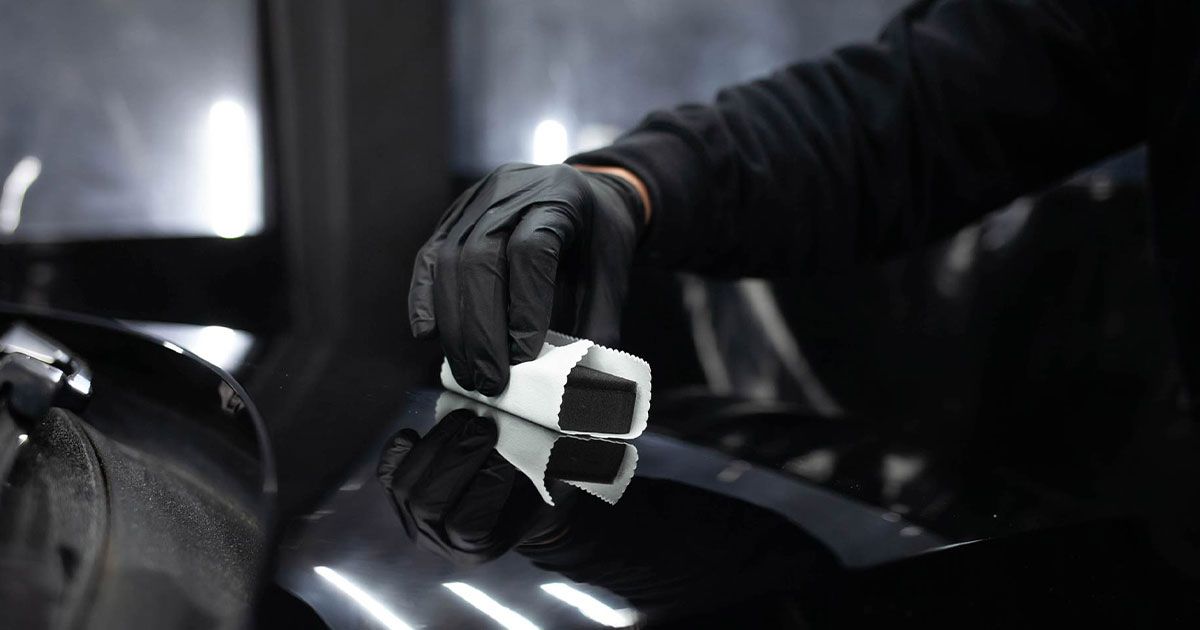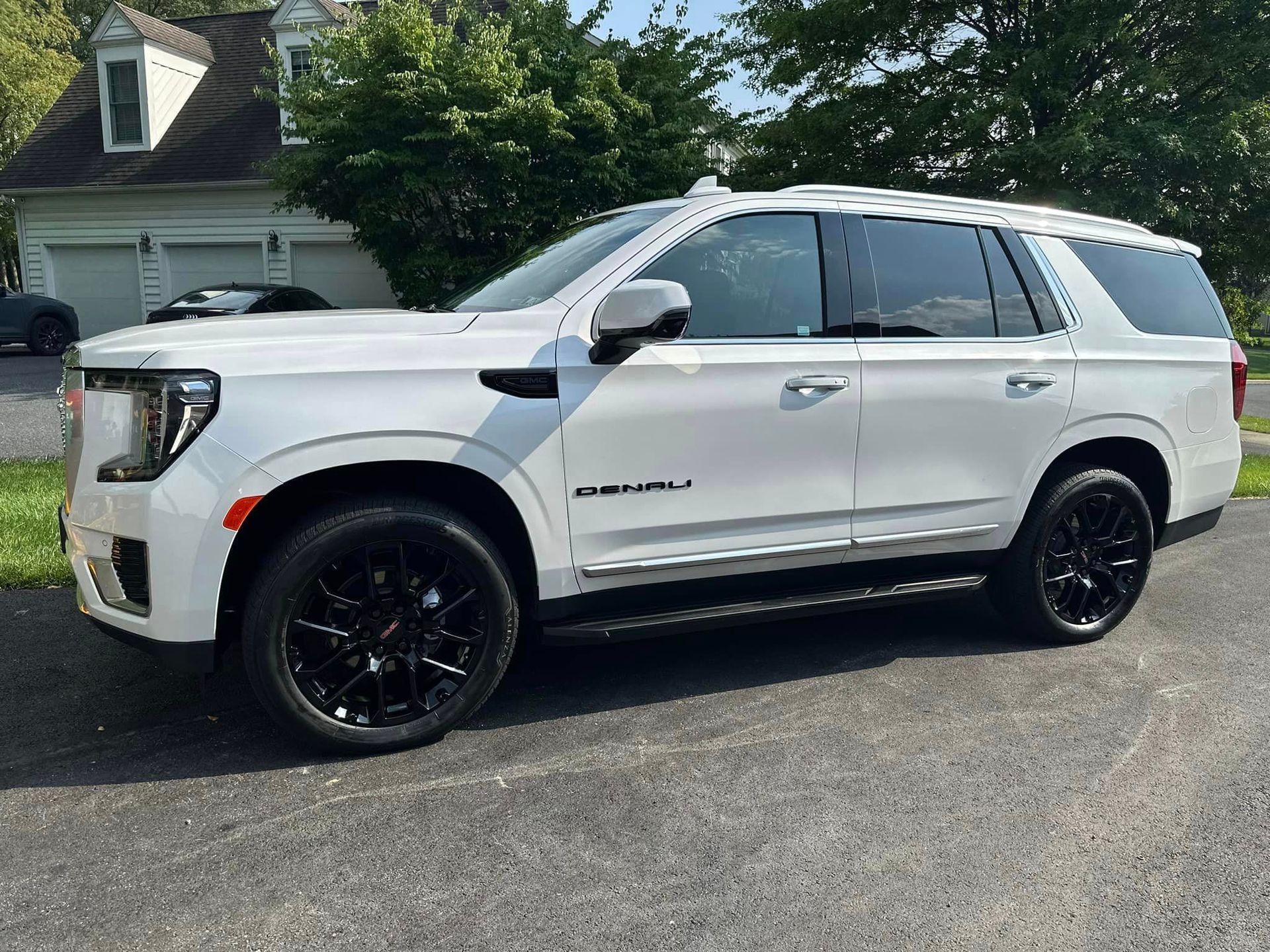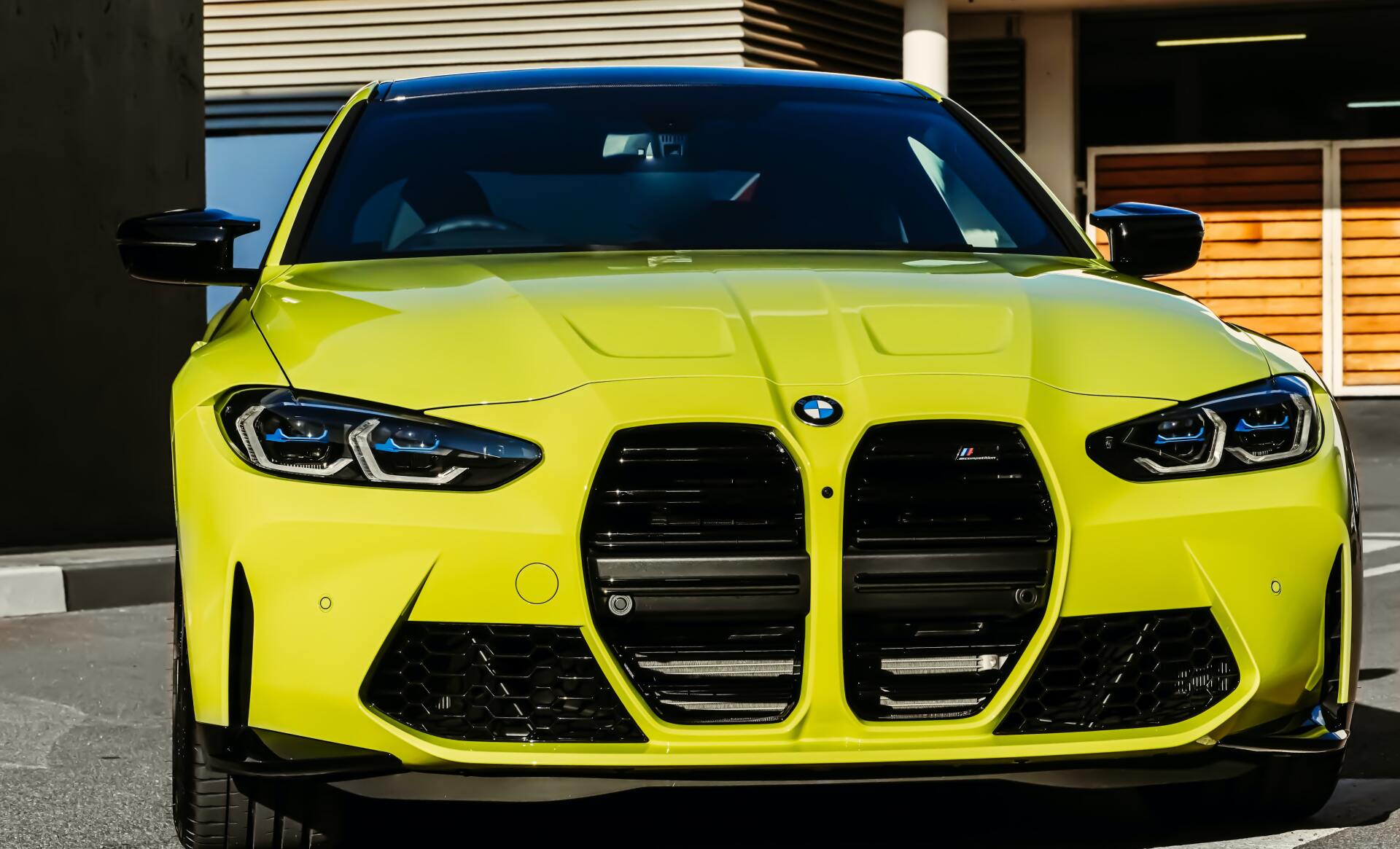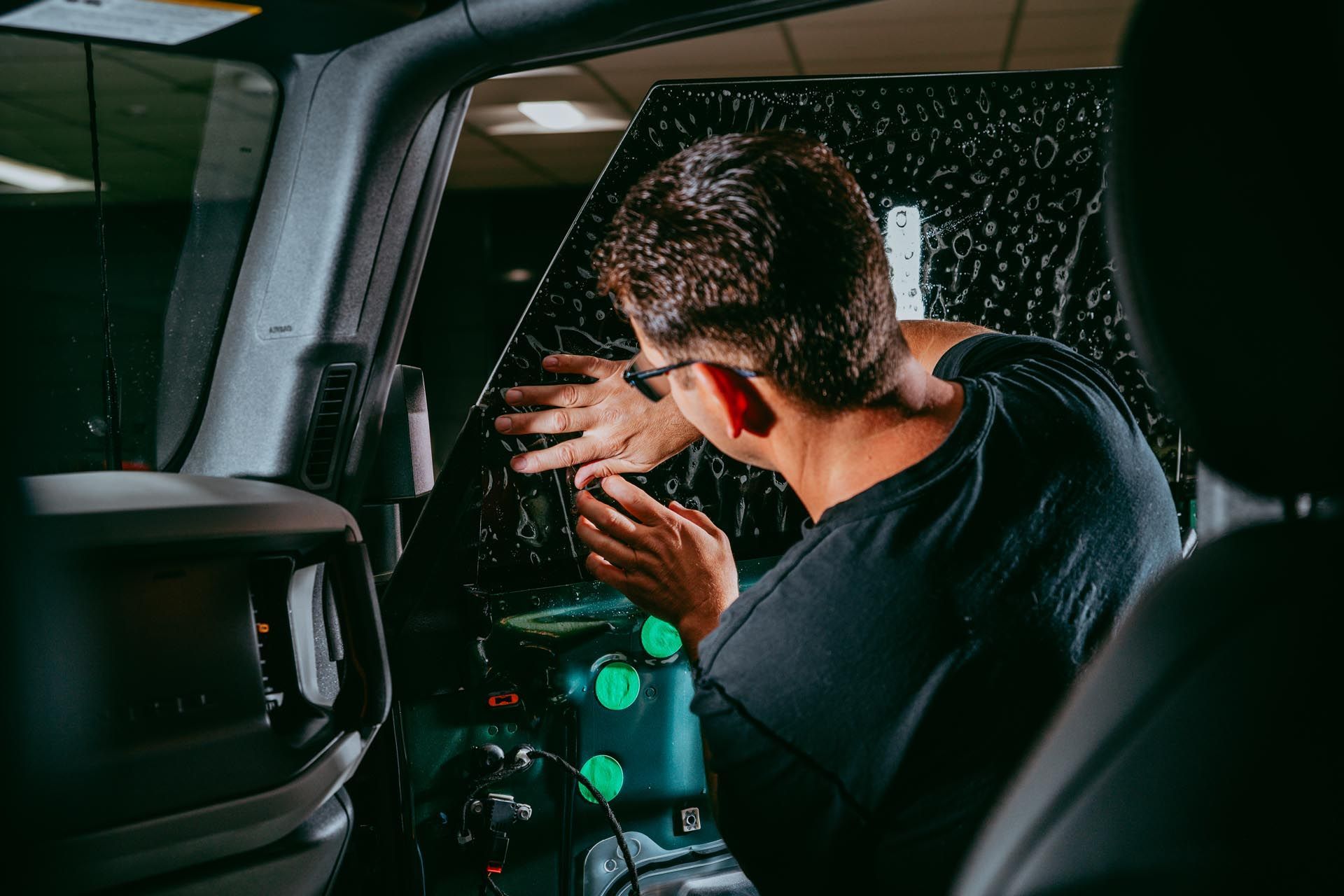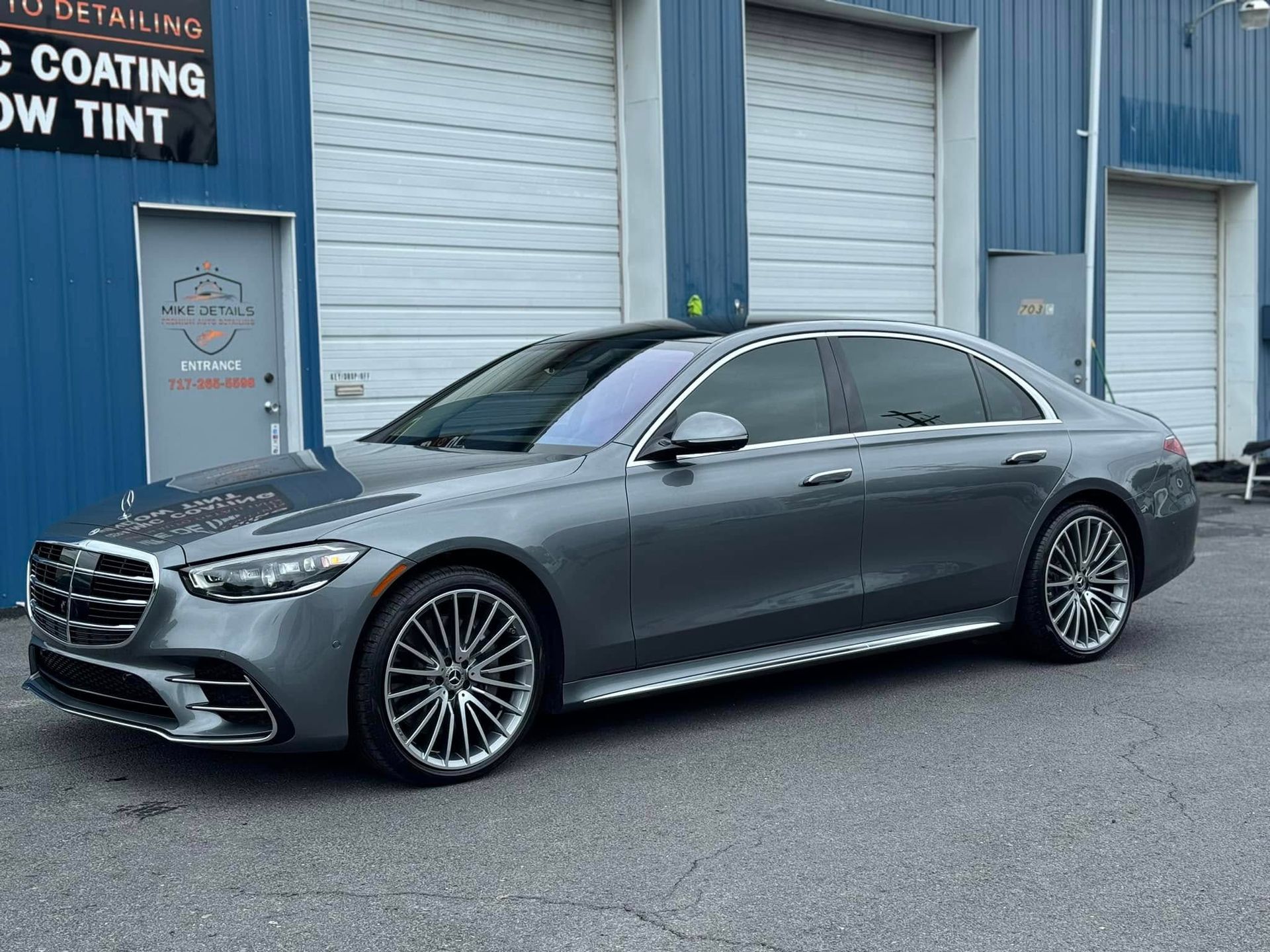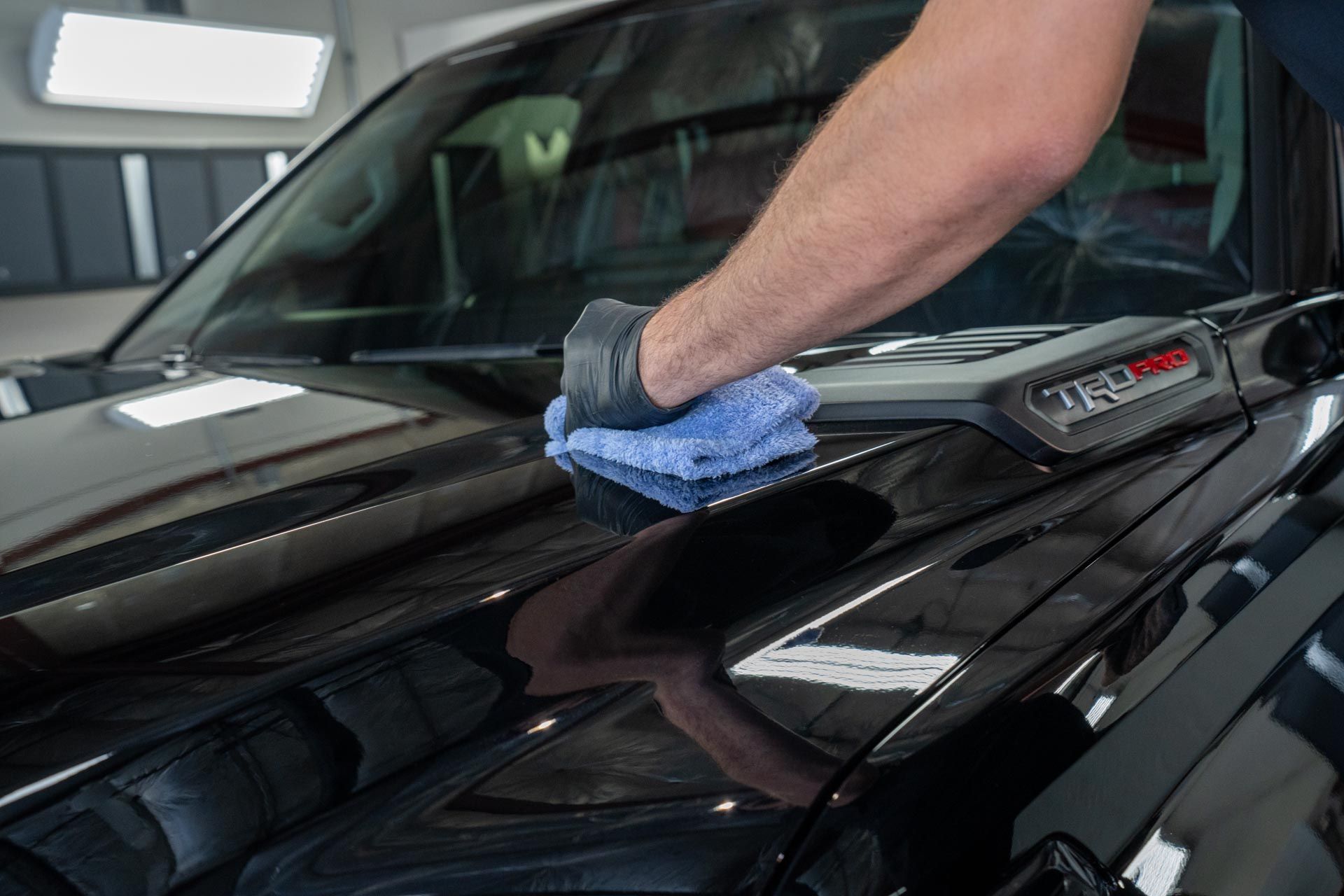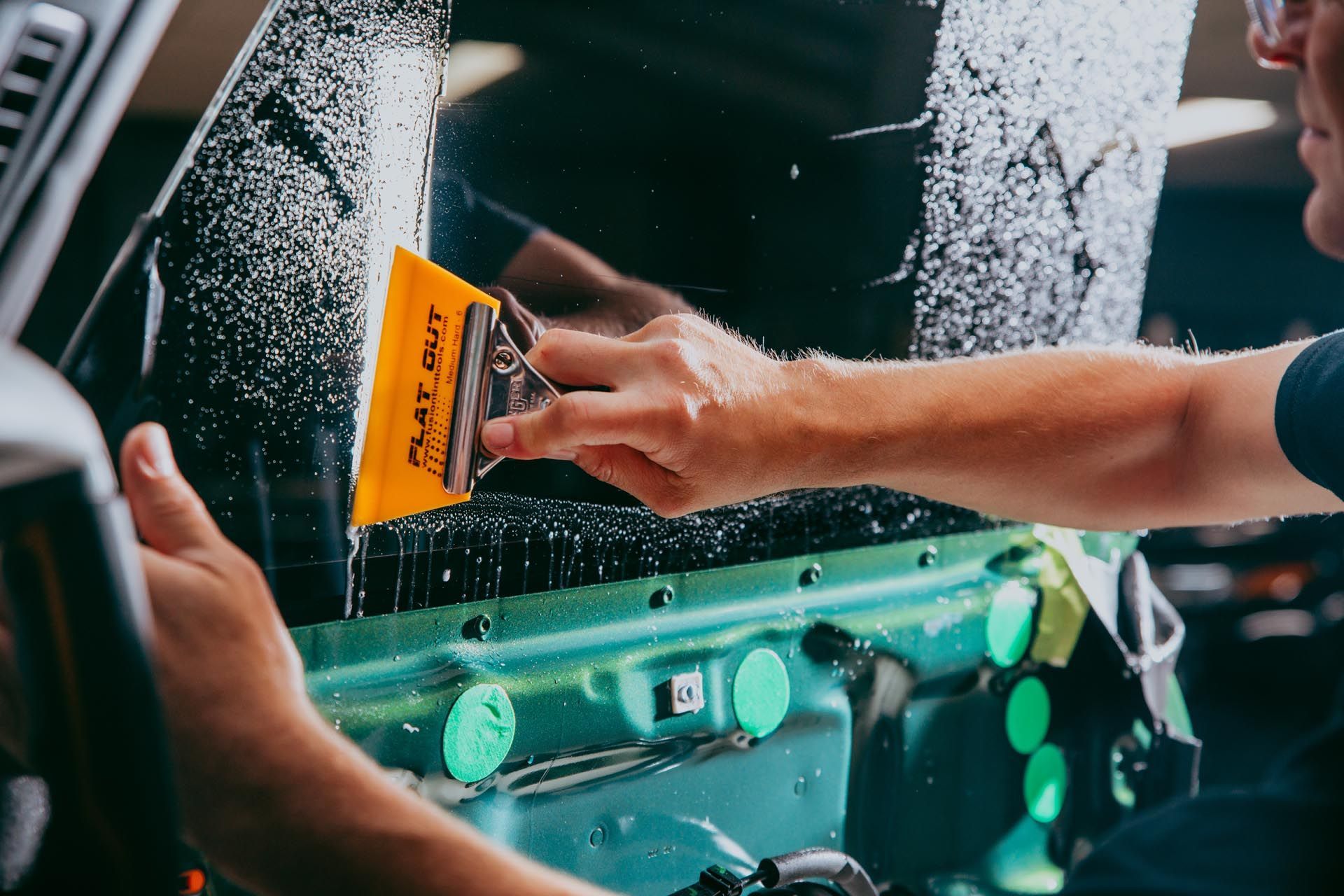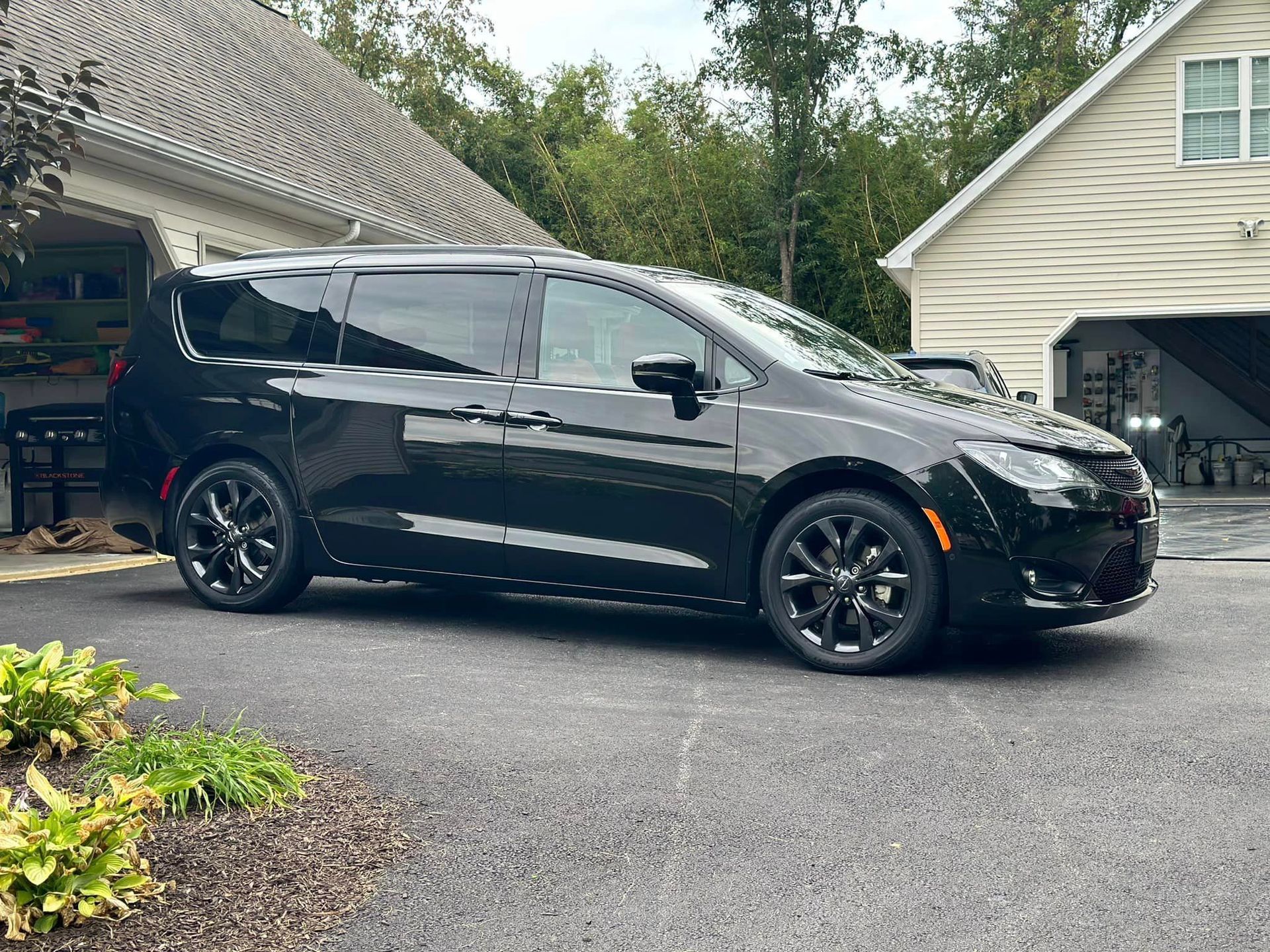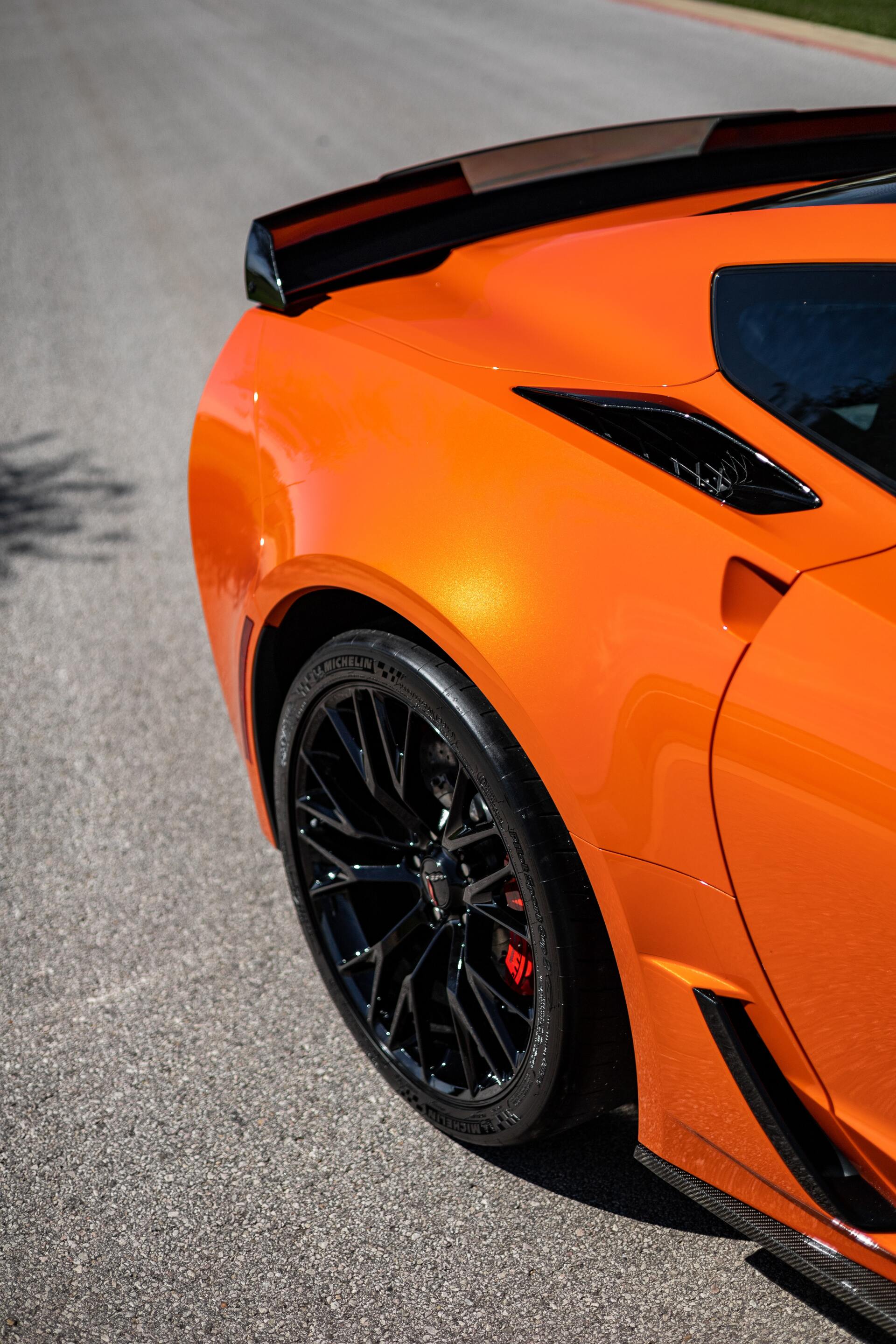The Science of Ceramic Coating: How It Works and Its Benefits
CALL (717) 265-5598
Conventional waxing no longer provides the level of protection and lasting shine modern drivers seek. In its place, ceramic coating has gained widespread popularity among both enthusiasts and everyday car owners. This innovative solution offers a durable, high-gloss finish while forming a protective barrier against environmental damage such as UV rays, bird droppings, and acid rain.
Ceramic coating works by forming a chemical bond with the vehicle's paint, creating a durable, hydrophobic layer that protects against environmental contaminants and UV rays. This process involves long molecular chains within the polymer that cross-link during curing, resulting in a strong barrier that enhances both durability and visual appeal.
Ceramic Coating Basics
A ceramic coating can be best described as a liquid polymer designed specifically for vehicles, acting like a protective armor when applied to the exterior surfaces. This coating isn’t merely a flimsy shield; it forms a semipermanent layer that bonds chemically with your vehicle’s paint, enhancing durability and making it resistant to environmental factors. Whether it’s rain, dirt, or UV rays, a ceramic coating provides formidable protection that traditional waxes simply cannot match. The science behind ceramic coatings is quite fascinating. Most formulations include key components such as silicon dioxide (SiO2), which gives the coating its exceptional hardness and resilience. When applied correctly, this polymer safeguards the paint beneath and intensifies its gloss, making your car look as good as new for years.
Imagine being able to wash your car with just a hose—thanks to the hydrophobic properties of ceramic coatings, water beads and rolls off effortlessly, carrying away dirt and grime without leaving streaks. Many high-quality ceramic coatings offer easy application while delivering professional-grade results, making them a favorite among car enthusiasts and detailers alike. However, proper application is essential; without it, you may not fully experience the coating’s protective and aesthetic benefits.
Composition of Ceramic Coatings
At the heart of every effective ceramic coating lies its polymer structure. The primary element is a long-chain polymer consisting of multiple molecular units that cross-link during installation. This process transforms the once runny liquid into a tough layer that can withstand regular wear and tear. It’s also important to know about the curing process involved after application; manufacturers typically recommend avoiding contact with water for approximately four hours post-application and refraining from washing for four days. Adhering to these guidelines ensures full bonding between the coating and the paint surface, maximizing protection. While different products boast varying claims regarding longevity (generally lasting 2-5 years), user experiences vary based on conditions like climate and maintenance routine. Therefore, opting for quality products combined with proper care will ensure an extended life for your vehicle's new protective layer.
Core Elements and Composition
At the heart of a ceramic coating lies silicon dioxide (SiO₂), which serves as its primary ingredient. Derived from natural sources like quartz or sand, SiO₂ is much more than just a mineral; it's the foundation for the hard, durable protection you see on vehicles. When cured, SiO₂ combines with other compounds to create a tough, glass-like finish that effectively repels environmental contaminants. This means your vehicle can endure the rigors of daily life without suffering visible damage. However, SiO₂ alone isn’t enough to create a high-quality coating. The formulation typically includes several key components, each serving specific functions. Consider this: solvents are necessary for evenly applying the coating onto the vehicle's surface; they act as carriers that allow the product to spread out smoothly during application. Meanwhile, resins play a significant role by adding thickness and durability to the final layer, ensuring it adheres well and lasts longer while enhancing the glossiness of the finish.
- Silicon Dioxide (SiO2): Provides the main protective qualities.
- Solvents: Help to apply the coating evenly.
- Resin: Adds thickness and durability.
What's particularly fascinating about ceramic coatings is their ability to create a nano-structured surface texture once cured. Imagine a microscopic shield over your paintwork—this intricate design enhances resistance to contamination like dirt, grime, and bird droppings. You’ll find that not only does this technique make your car look better for longer, but it also simplifies maintenance; cleaning becomes effortless as these substances are less likely to stick. Understanding these components emphasizes why proper application is crucial for maximizing effectiveness. When these coatings are applied correctly, they work synergistically to form that resilient layer we admire so much.
Impact on Durability and Appearance
One of the most striking advantages of ceramic coatings is that they significantly bolster a vehicle's durability while elevating its visual appeal. Imagine a protective barrier meticulously crafted from liquid polymers, locking onto your car's exterior like an invisible shield. This coating not only defends against harmful environmental factors such as UV rays, acid rain, and road grime, but it also combats oxidation. With a properly applied ceramic coating, your vehicle's surface can resist wear and tear far better than traditional wax finishes, leading to a longer-lasting pristine appearance. As mentioned earlier, the hydrophobic properties of these coatings cause water to bead up and roll off rather than cling to the surface. This action ensures that minimal moisture remains behind to form unsightly water spots that tarnish the finish over time.
Ceramic coatings are known for their ability to protect your vehicle’s finish by reducing oxidation, preserving color vibrancy, and preventing that dreaded dull appearance. This long-lasting protection also means fewer maintenance efforts, allowing you to spend less time cleaning and more time enjoying the drive. For those with busy schedules, the ease of upkeep is a major advantage. However, to truly benefit from a ceramic coating, correct application is essential. When applied improperly, it can result in uneven coverage and reduced effectiveness. Whether you opt for a professional service or a well-designed DIY kit, it's crucial to ensure proper application to achieve optimal results.
Key Advantages and Drawbacks
Ceramic coatings are often praised for their ability to preserve a vehicle’s appearance by enhancing gloss and providing a layer of protection against environmental contaminants. This barrier helps maintain the car’s finish over time, reducing the impact of everyday exposure to elements like UV rays, road grime, and acid rain. The result is a consistently clean and polished look that lasts far longer than traditional waxing methods. While the benefits are clear, it’s important to remember that results largely depend on proper surface preparation and correct application. Without those, even the best products may fall short of expectations.
However, ceramic coatings are not without their drawbacks. While they provide numerous benefits, one of the main drawbacks is the cost associated with professional applications. Indeed, these coatings can range from $500 to $2000 depending on various factors such as the brand used and whether additional services are provided. Although DIY options exist, they typically lack the longevity and precision achieved by professionals. Furthermore, many consumers struggle with weighing this cost against the benefits received. Individuals must consider whether the investment aligns with their expectations for vehicle maintenance and appearance over time.
Perfecting Maintenance Practices
Regular yet gentle cleaning is essential for maintaining the longevity and performance of ceramic coatings. Using abrasive materials or harsh chemicals can compromise the protective layer, reducing its effectiveness over time. To preserve the coating, it is recommended to wash the vehicle using a pH-neutral car shampoo paired with a soft microfiber wash mitt. This method prevents surface damage and supports the coating’s ability to repel contaminants. Additionally, rinsing thoroughly after washing is crucial, as leftover soap residue can attract dirt and dull the finish. Maintaining a consistent cleaning schedule is key to maximizing the benefits of ceramic coatings. Weekly washes help prevent the accumulation of dirt, water spots, and other elements that can gradually degrade the coating’s appearance and performance. This routine care reduces the need for more intensive detailing and preserves the vehicle’s clean, polished look over time. A proactive approach to upkeep ensures the protective qualities of the coating remain intact, contributing to the long-term value and presentation of the vehicle.
Key Maintenance Practices
Proper maintenance is essential to preserving the effectiveness and longevity of a ceramic coating. Weekly washes help prevent dirt buildup and water spots, maintaining the coating’s hydrophobic properties and visual appeal. Monthly inspections are equally important, as they allow for early detection of any signs of coating failure or surface contaminants. Identifying issues such as fading or uneven water beading early on can prompt timely corrective action, such as reapplication or the use of booster products. Some ceramic coatings benefit from an annual refresh using maintenance solutions designed to reinforce the protective layer. By adhering to a consistent care routine that includes these key practices, car owners can ensure their coating continues to perform optimally—delivering long-lasting protection, easier cleaning, and a consistently polished appearance.
In summary, strict maintenance preserves the appearance of your vehicle and significantly extends the lifespan of its protective coating.
Precision Ceramic Coating in Mechanicsburg, PA
At Mike Details, we specialize in
professional ceramic coating services that provide lasting protection and unmatched gloss for your vehicle. Our expertly applied coatings, serving drivers throughout Mechanicsburg, PA, create a durable barrier against UV rays, dirt, and harsh weather, thereby simplifying maintenance and preserving that like-new finish for the long term. If you’re ready to protect your investment with a solution that combines cutting-edge technology and proven results,
book your ceramic coating appointment with Mike Details today.


